More Than a Postcard: 5 Structures You Need to See with a Builder’s Eye
I’ve been kicking around the world of structural engineering for a long time, and I’ve had the chance to get up close and personal with some of America’s most famous buildings. People often ask me which ones they really need to see. My answer is never about finding the best photo for social media. It’s about finding the buildings that tell a story—a story of ambition, clever problem-solving, and the sheer grit it takes to build something that lasts.
In this article
When you learn to see past the pretty facade and look at the bones of a place, that’s when you really start to appreciate it. How did they get all that steel up there? Why that type of stone and not another? What secret tricks are keeping this thing standing against wind, water, and time? That’s the good stuff.
So, this isn’t just another travel list. Think of it as a backstage tour from a builder’s perspective. We’ll dig into the science, the pro techniques, and the hard-won lessons that make these places legendary. Honestly, once you understand how they were made, you’ll never look at them the same way again.
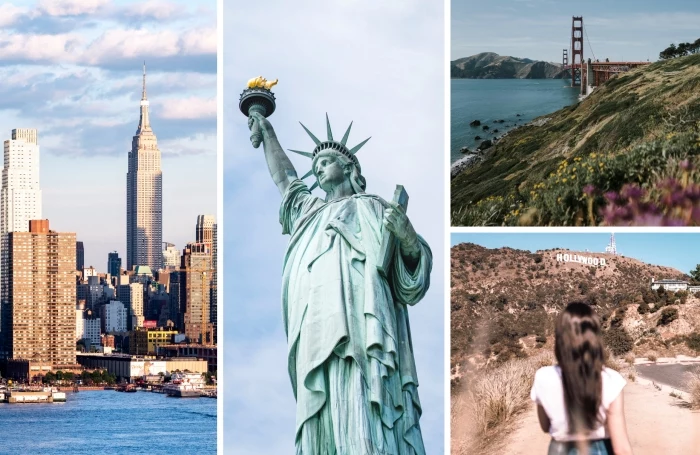
1. The U.S. Capitol: A Masterclass in Stone and Iron
Everyone sees the Capitol as a symbol of democracy, but for anyone who builds things, it’s a living textbook on long-haul construction and clever adaptation. The building we see today wasn’t built all at once; it’s a blend of different eras, each with its own engineering fingerprint.
The Engineering Behind It All
Let’s talk about that dome. It looks like it’s carved from impossibly heavy stone, right? Surprise—it’s not. The iconic dome is actually a triumph of cast-iron engineering. It’s essentially a shell within a shell, made from nearly 9 million pounds of iron. This was a revolutionary choice. A traditional stone dome of that size would have simply been too heavy for the building’s original walls and foundation to support.
By using cast iron, the designers could go big and bold without risking structural collapse. Oh yeah, and the design also brilliantly handles a classic engineering headache: thermal expansion. On a hot D.C. summer day, that iron expands. The dome was engineered with special joints that allow it to “breathe,” moving just enough to prevent cracks or stress on the rest of the building. It’s a principle we still use today, just with more modern materials.

A Visitor’s Guide for the Curious
When you visit, don’t just stare up at the rotunda. Pay attention to the walls. See if you can spot the difference between the original, softer sandstone and the newer, brilliant white marble of the extensions. In the older sections, you can almost feel the history in the slight unevenness of the hand-laid stone.
- Cost & Time: Public tours are free, which is fantastic. But you absolutely have to plan for the security screening, which can take a while. I’d budget at least 2-3 hours for the entire visit.
- Pro Tip: The standard public tours are good, but the real magic is in the staff-led tours. You can request these months in advance through your local representative’s or senator’s office website. They often provide a much deeper dive into the building’s history and architecture.
- Accessibility: The Capitol is very accessible, with ramps and elevators available for visitors with mobility challenges.
- Engineer’s Challenge: As you walk through, try to find a spot where the old sandstone meets the new marble. It’s a visible timeline of the building’s long life and constant evolution.
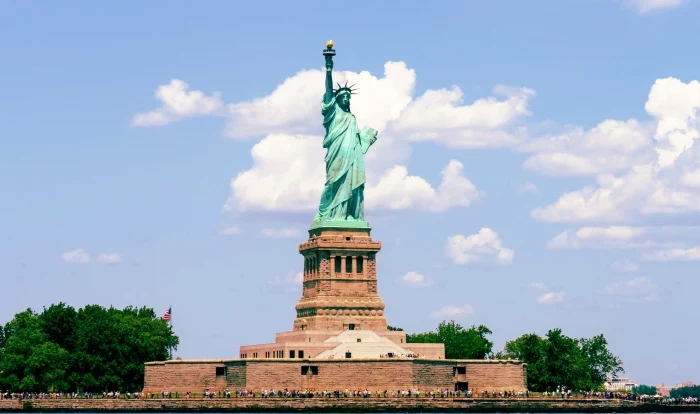
2. The Statue of Liberty: A Lesson in Copper and Chemistry
From an engineering standpoint, the Statue of Liberty is just incredible. It’s a massive, delicate sculpture that has to withstand the salty, corrosive air of a major harbor. How it was built and, more importantly, how it was saved from destroying itself is a fascinating story.
The Genius of a Copper Skin
The statue’s famous green skin is made of copper sheets that are surprisingly thin—only about the thickness of two pennies stacked together. To get those flowing shapes of her robe and face, artisans used a classic metalworking technique where they hammered the copper sheets from the back side into wooden molds. This process, known as repoussé, makes the thin metal incredibly strong and rigid.
But the real secret is the internal support structure designed by a brilliant French engineer. It’s not a stiff, rigid frame. Instead, it’s a flexible iron skeleton. A central pylon supports a secondary frame of iron bars that follow the shape of the copper skin but—and this is key—they don’t actually touch it. They’re connected by hundreds of U-shaped copper saddles, which allows the statue to flex in the wind and lets the copper skin expand and contract with temperature changes without fighting the iron frame.
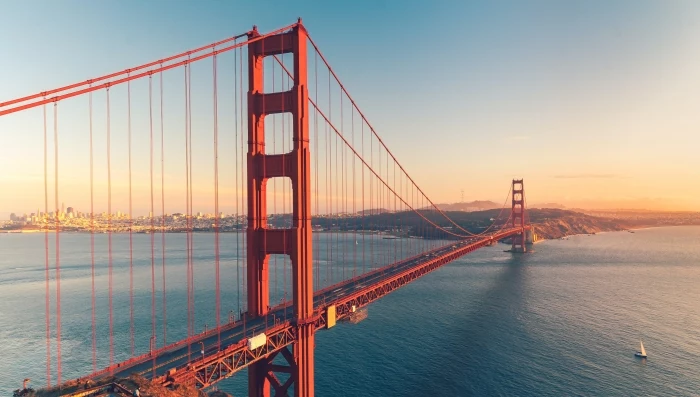
A Hard-Learned Lesson in Corrosion
There was just one big problem with the original design. When you put two different metals (like iron and copper) together with a bit of moisture, you create a battery. This process, called galvanic corrosion, aggressively eats away at the less-noble metal—in this case, the iron supports. For decades, rain and humidity were slowly destroying the statue from the inside out.
The massive restoration project to fix this was a landmark moment in historic preservation. The engineers made a game-changing decision: they replaced all 1,800+ iron bars with a modern stainless steel alloy. Crucially, they also installed a Teflon lining in every single copper saddle to act as an insulator, preventing any metal-to-metal contact. It was a brilliant, permanent fix to a fundamental chemistry problem.
Seeing It with a Builder’s Eye
If you can, get tickets to the crown. It’s a tight, 162-step spiral staircase and definitely not for anyone with claustrophobia or a fear of heights. But the payoff is huge. You’re literally inside the skeleton, seeing the support bars and saddles connecting to the rippled green copper. You can physically touch the engineering that holds her together.
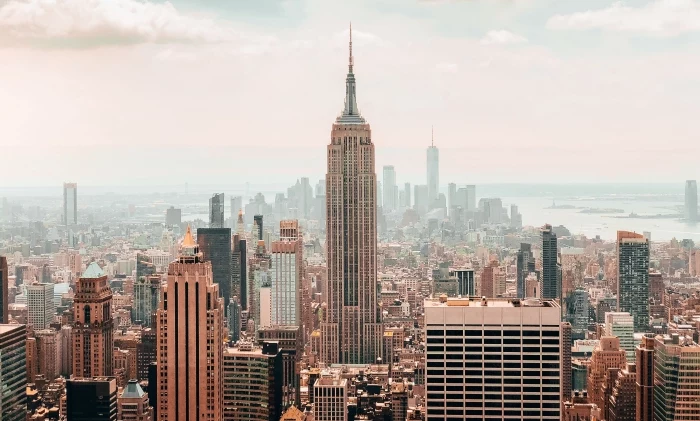
- Cost & Time: A ferry ticket, which includes access to the island and the pedestal, typically runs about $25-$30. Crown tickets are only a little more but sell out months in advance. Plan for a half-day trip (4-5 hours) including the ferry rides and security.
- Pro Tip: Only buy tickets from the official vendor, Statue City Cruises. Avoid the street resellers! The grounds and pedestal museum are fully accessible, but the historic climb to the crown is not.
- Engineer’s Challenge: If you make it to the crown, look for the modern, insulated saddles connecting the frame to the skin. You’re looking at the solution that saved the entire statue.
3. The Golden Gate Bridge: Taming Wind and Fog
This bridge is more than just a way to get across the bay; it’s a defiant statement. Building a suspension bridge of this scale in such a hostile, foggy, and turbulent location was thought by many to be impossible. Its success is a monument to bold engineering.
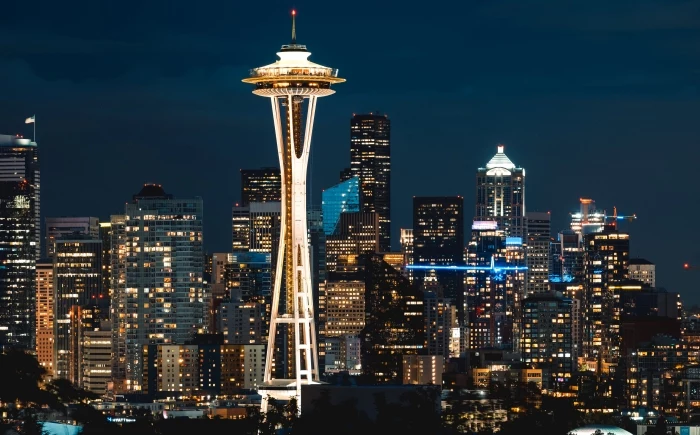
The Science of a Perfect Balance
A suspension bridge is a beautiful balancing act between tension and compression. The road deck’s weight hangs from vertical cables, which transfer that massive load up to the two main cables draped over the towers. Those main cables are under incredible tension. Meanwhile, the towers are under immense compression, driving the bridge’s weight straight down into the earth.
The real challenge was the location. The south tower had to be built over a thousand feet from shore in deep, swirling water. It required constructing a massive concrete enclosure, or fender, pumping it dry, and then building the pier inside. It was an incredibly dangerous and unprecedented feat of marine construction.
A Job That Never Ends
The bridge’s two main cables are its lifelines. Each one is over three feet in diameter and made of more than 27,000 individual steel wires. They weren’t made in a factory; they were spun in place, one wire at a time, by a shuttle that traveled back and forth across the strait. It’s an amazing technique for creating perfectly uniform, incredibly strong cables.
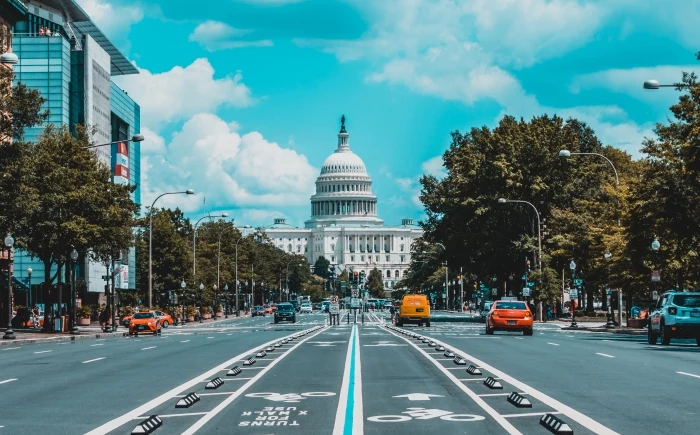
Of course, the most famous job is the painting. That “International Orange” color isn’t just for looks—it’s the primary defense against the corrosive salt air. A dedicated team works 365 days a year maintaining the paint. It’s a job that literally never ends. They blast sections down to bare metal, apply a zinc-rich primer, and then the iconic topcoat.
How to Experience It Right
You can walk or bike across the 1.7-mile span, and I can’t recommend it enough. But be prepared! The weather can turn on a dime. It can be sunny in the city and suddenly freezing, windy, and foggy on the bridge. Wear layers.
- Cost & Time: It’s free to walk or bike across. Driving into the city from the north has a toll, usually around $9-$10. Give yourself 1-2 hours to walk part of it, take photos, and soak it in.
- Pro Tip: Don’t even try parking at the Welcome Center on the San Francisco side, especially on a weekend. It’s a nightmare. A much better plan is to park at Crissy Field and enjoy the scenic walk up to the bridge.
- Best Photo Op: The view from Fort Point underneath the bridge is breathtaking, but for that classic postcard shot, drive across to the Marin Headlands and find Battery Spencer. The view of the bridge with the city in the background is unbeatable.
- Engineer’s Challenge: Walk to the middle of the span on a windy day. You can actually feel it swaying slightly, which is exactly what it’s designed to do to handle the powerful forces of nature.
4. The Empire State Building: The Assembly Line in the Sky
The Empire State Building is the quintessential skyscraper. What’s so mind-boggling about its story isn’t just its height, but the unbelievable speed of its construction. It rose like a rocket during the depths of the Great Depression, a symbol of pure industrial power.
The Magic of a Steel Skeleton
This building is a steel-frame structure. Unlike older buildings with thick, load-bearing walls, all its weight is carried by an internal steel skeleton. The limestone on the outside is just a “curtain wall”—it keeps the weather out but supports nothing. This method is what allows buildings to scrape the sky.
The real story here is logistics. The project was run with military precision. To go from foundation to completion in just over a year, the builders created what was basically an assembly line in the sky. Steel beams were made in Pennsylvania, marked with their exact final position, and their delivery was timed to the minute. At its peak, the frame grew by four and a half stories a week. It’s still staggering to think about.
Heads up, here’s a lesser-known fact: None of New York’s iconic skyscrapers would exist without the rock they’re built on. The island of Manhattan sits on an incredibly strong bedrock called Manhattan schist, which is shallow enough to provide a perfect, stable foundation for these massive structures.
Tips for Your Trip to the Top
There are two observation decks: the famous open-air one on the 86th floor and a smaller, enclosed one on the 102nd. The 86th floor is the classic experience.
- Cost & Time: It’s not cheap. Tickets for the main 86th-floor deck start around $44 for an adult. If you want to go all the way to the 102nd floor, you’re looking at closer to $79. Prices shift, so always check the official website. Booking online in advance is a must to skip the worst of the lines. Plan for about 2 hours.
- Pro Tip: The view is amazing, but it can be seriously windy and cold on the 86th floor, even in summer. Hold on to your hat and phone! For photos, the golden light of late afternoon is fantastic, but the city lights at night are pure magic.
- A Cool Secret: A few years back, the building had a massive green renovation. They replaced all 6,500+ windows with super-insulated, energy-efficient units, cutting energy use by nearly 40%. It’s a great example of teaching an old dog new tricks.
- Engineer’s Challenge: From the observation deck, notice how the building’s design “steps back” as it gets higher. This was a response to a local zoning law, but it became one of the most iconic features of its style.
5. The Space Needle: A Tripod to the Future
Built for a World’s Fair, the Space Needle is a perfect time capsule of mid-century optimism. It’s a product of the Space Race and a bold belief in a high-tech future. Its unique design is both a quirky sculpture and a seriously clever piece of engineering.
The Physics of a Perfect Balance
The Needle looks impossibly slender, but it’s incredibly stable. The secret is its super low center of gravity. Most of the structure’s weight isn’t in the tower itself, but in the massive concrete and rebar foundation buried 30 feet underground. This foundation weighs more than the entire tower above it, anchoring it to the ground like a taproot. The tower’s center of gravity is only about five feet above the ground, making it almost impossible to tip over.
The tripod base and slender waist are designed to handle both Seattle’s high winds and its serious earthquake risks. In fact, it was built to withstand double the seismic forces required by the building codes of its time.
A Renovation for a New Generation
Like some of the other icons on this list, the Needle recently got a major facelift. The goal was to open up the view. They replaced the old safety cage on the observation deck with huge, outward-tilting glass panels. And on the level below, they installed “The Loupe,” the world’s first and only rotating glass floor. It’s a wild experience.
Visiting the Needle
Take your time on both levels of the top house. Walking on the rotating glass floor and seeing the city and the structure right beneath your feet is something you won’t forget.
- Cost & Time: A standard adult ticket is usually in the $35-$40 range. Timed-entry tickets booked online are essential. A typical visit lasts 1-2 hours.
- Pro Tip: Seattle weather is no joke. Before you buy tickets, check the live webcam on the Space Needle’s official website. If it’s a foggy day, you could be paying to stand inside a cloud with zero visibility. The elevators and observation decks are fully accessible.
- Engineer’s Challenge: While you’re on the rotating glass floor, look for the huge bolts and structural connections where the ‘top house’ you’re standing in is attached to the tower’s core. It’s a rare chance to see a building’s guts from the inside out.
So there you have it. These places are so much more than dots on a map. They’re physical records of history, ingenuity, and craft. The next time you’re standing in front of a great building, I hope you’ll look a little closer and try to read the story its builders left behind for you.
Inspirational Gallery
The concrete in the Hoover Dam, completed in 1936, is technically still curing. The chemical reactions that give concrete its strength continue for decades, if not centuries.
To manage the immense heat generated by this process during construction, engineers had to embed a network of over 580 miles of steel pipes carrying refrigerated water through the poured concrete sections. Without this innovative cooling system, the structure would have taken over 125 years to cool and would have likely self-destructed from thermal stress.
Hot-Driven Rivets: This was the gold standard for over a century. A team would heat a rivet to glowing orange, insert it into a hole, and hammer the other end to form a second head, clamping the steel plates together as it cooled and contracted.
High-Strength Bolts: Today, rivets are replaced by bolts tightened to a precise, massive tension using a calibrated torque wrench. It’s faster, requires a smaller crew, and provides a more reliable and measurable clamping force.
The shift from the noisy, dangerous work of a riveting gang to the precision of bolting marks a major evolution in construction safety and efficiency.
Why don’t all modern skyscrapers look like glass boxes?
It comes down to the building’s structural
- Notice the distinctive, stable rust-like finish on bridges or building facades.
- It eliminates the need for paint or other protective coatings.
- The surface heals itself if scratched, maintaining its protective layer.
The secret? A special material called Corten steel. This steel alloy was designed to develop a protective patina when exposed to weather, creating a beautiful, low-maintenance, and incredibly durable architectural finish.
When you’re looking at an old brick building, pay attention to the small metal plates on the exterior, often shaped like stars or circles. These are anchor plates, the visible end of a tie-rod that runs through the building to the opposite wall. They were often added to prevent the brick walls from bowing outwards under the load of the floors and roof—a simple but effective retrofitted solution to a common structural problem.
According to the American Society of Civil Engineers, nearly 40% of the 617,000 bridges in the United States are 50 years or older.
Keeping these aging structures safe is a monumental task. Modern engineers use techniques like carbon fiber wrapping to strengthen deteriorating concrete columns or install advanced sensors that monitor stress and vibration in real-time, giving early warnings before a critical failure can occur. It’s a constant battle against time and the elements.
A key distinction for any builder: Compressive strength is a material’s ability to resist being squashed, while tensile strength is its ability to resist being pulled apart. Stone and concrete are fantastic under compression (think arches and columns), but terrible under tension. Steel, on the other hand, excels in both, which is why it’s the perfect material for long-span beams and the rebar that gives concrete its tensile strength.
For a masterclass in how structure becomes sculpture, look at the work of Santiago Calatrava. His buildings, like the World Trade Center Transportation Hub in New York or the Ciutat de les Arts i les Ciències in Valencia, Spain, often evoke organic forms—skeletons, wings, or eyes. He uses concrete and steel not just to hold a building up, but to create a sense of movement and lightness that defies the materials’ weight.
Ever felt a tall building sway slightly on a windy day?
Don’t panic; it’s designed to do that. Rigidity isn’t always a good thing. Flexibility allows a structure to absorb and dissipate energy from wind or seismic events without breaking. Engineers perform complex wind-tunnel tests on scale models, like those done at facilities such as RWDI in Canada, to perfect a skyscraper’s shape and structural system to ensure it’s both safe and comfortable for occupants.
- How did they solve the foundation issues in a swampy area?
- What’s the story behind that specific truss design?
- Are there signs of expansion joints on that long bridge span?
- Can I see evidence of different construction phases or repairs?
Next time you visit a landmark, try asking these questions. Shifting your focus from










